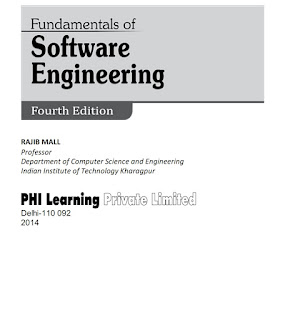ISCII
ISCII stands for the Indian Script Code for Information Interchange. It is a type of coding scheme introduced in 1997. The Bureau of Indian Standards (BIS) released this scheme.
Internal Storage Encoding of Characters
We know that a computer understands only binary language (0 and 1). Moreover, it is not able to directly understand or store any alphabets, other numbers, pictures, symbols, etc. Therefore, we use certain coding schemes so that it can understand each of them correctly. Besides, we call these codes alphanumeric codes.
So basically, this is an encoding standard for the Indian languages. Besides, this standard follows only a single encoding schema which makes it easier to transliterate between different writing systems.
It consists of 256 characters. Furthermore, the first 128 characters are the same as the ASCII coding. And the rest characters from 128-255 are the characters of different Indian languages. Moreover, it uses 8 bits to represent the characters.
Mostly, the characters of the Indian language derives from the ancient Brahmi script. Moreover, all the characters resemble very closely to each other in terms of phonetics. Therefore, only a certain number of common character set was sufficient for covering a number of Indian languages.
Supported Languages in ISCII
The standard supports various Indian languages. They are as follows:
- Punjabi
- Gujarati
- Oriya
- Telugu
- Kannada
- Devanagari
- Bengali
- Assamese
- Tamil
- Malayalam
Advantages of ISCII Coding Scheme
It has advantages as follows:
- It covers a wide variety of Indian languages.
- The character set is simply and hence, easy to understand.
- The Indian characters resemble closely each other in terms of phonetics. Therefore, only a common character set is sufficient for many languages.
- Transliteration between languages is quite easy.
Disadvantages of ISCII Coding Scheme
It has disadvantages as follows:
- The keyboard is not common for the ISCII characters. Hence we need a special keyboard for it.
- The Unicode standard of encoding already involves the ISCII characters. Hence, there is no use left of this code standard.
Unicode
This coding scheme was introduced in 1991. Since the ASCII characters were not enough to represent all the characters there was a need for another coding standard. As, the old scheme was maybe sufficient for the English characters but, it was not able to represent other languages. Today, the Unicode covers more than 128,000 characters.
Moreover, it has different types according to the bits used for encoding such as UTF-8, UTF-16, UTF-32.
Difference Between Unicode and ISCII
The differences between them are as follows:
| Unicode Coding Scheme | ISCII Coding Scheme |
| It uses variable bit encoding according to the requirement. For example, UTF-8, UTF-16, UTF-32 | It uses 8-bit encoding and is an extension of ASCII. |
| Unicode coding scheme is a standard form. | It is not a standard all over the world. Moreover, it covers only some Indian languages. |
| People use this scheme all over the world. | It covers only limited Indian languages hence, it cannot be used all over the world. |
| The Unicode characters themselves involve all the characters of the ISCII encoding. Therefore we can say that it is a superset for it. | It has its equivalent coding characters in the Unicode. |
| It has more than 128,000 characters. | In contrast, it has only 256 characters. |
Frequently Asked Questions (FAQs)
Q1. What is the full form of ISCII?
A1. ISCII stands for the Indian Script Code for Information Interchange.
Q2. Who introduced the ISCII coding scheme?
A2. It is a type of coding scheme introduced in 1997. The Bureau of Indian Standards (BIS) released this scheme.
Q3. What is the main difference between Unicode and ISCII coding?
A3. The main difference between the two coding schemes is that Unicode has over 128000 characters of various languages whereas, the other scheme contains only 256 characters of some Indian languages.
Read More
- Office Tools and Functions of Office Tools
- What are Domain Specific Tools and Examples of Domain Specific Tools
- ASCII Definition, Use, Types, Unicode
- UNICODE Definition, Types, Uses, Advantages, Importance
- What is Memory in Computer Science Parts of Memory
- ISCII Definition, Languages supported in ISCII, Advantages, Disadvantages
- What are Computer Ports Characteristics of Ports and Types of Ports
- What is PS/2 Port, Characteristics of a PS/2 port, PS/2 Port Pins
- FireWire Port, Characteristics of FireWire Port, Versions of FireWire
- Parallel Port, Characteristics of Parallel Port, USB Port


